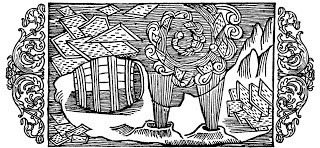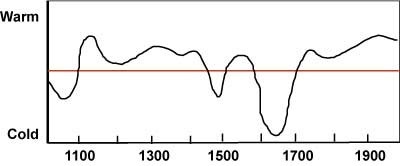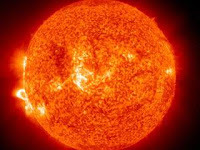The Little Ice Age: coldest in 17th century
 Rubens: The Fur Cloak, about 1636-1639.Is there globalcooling in our future? Scientists are predicting a period of less solaractivity. See Associated Press article following. Who knows? Perhaps our future will mirror our predecessors' experience.
Rubens: The Fur Cloak, about 1636-1639.Is there globalcooling in our future? Scientists are predicting a period of less solaractivity. See Associated Press article following. Who knows? Perhaps our future will mirror our predecessors' experience.Our ancestors survived conditions with considerably lessresources than we have available. There was no central heating in their homesand shops, of course, and fuel (peat, coal, and wood) was just as expensive, ormore so, as the fuels we consume today. Most people just couldn't afford theluxury of warmth in winter. They didn't change clothes or bathe much, especiallyin cold weather when they'd have to haul and heat water. They shared beds neara kitchen hearth, too.
This is just my observation from studying genealogy, notbacked up with statistics, but it looks like family size burgeoned during theglobal temperature dip of the 16th and 17th centuries:maybe the long, freezing nights were not all that boring! Certainly, a numberof family members of William and MaryBarrett Dyer had birthdays in September through December. So we can make an educated guessabout what happened during the preceding January, February, and March deep freezes. It didn't hurt that the Puritans took the "Be fruitful and multiply" command from Creation very seriously!
The Little Ice Age, from about 1317-1800, began withcatastrophic floods, crop failure, and domestic animal deaths (which brought oneconomic depression), harsh winters—and starvation. Epidemics raged unchecked,and millions died in the bubonic plague outbreak in 1348-1350. Because so manylaborers (peasants tied to the land, who owed service to their landlords) died,cathedral and castle building ground to a halt for years.
 Iceland surrounded by icebergs, 17th centuryOf course our ancestors knew nothing about it, but theyexperienced the effects of a plunge in sunspot activity in the 1600s, whichcorresponded with the coldest years of the Little Ice Age. Specifically duringMary Dyer's lifetime, 1611-1660, there was the time of famines, waves ofbubonic plague across Europe, the Thirty Years War, the Great Migration to America, the English Civil War, and theexplosion of African slave trade to the Americasand Europe. On America's east coast, there wereharvest failures, starvation, epidemics of smallpox and yellow fever, and pestplagues. Iceland'sports were ice-bound by miles for several years, and trade and passengershipping from Europe was forced far south toavoid sea ice. Boston Harbor (sea water) frozeover for two to three miles out, hard enough to walk on, for two weeks at atime.
Iceland surrounded by icebergs, 17th centuryOf course our ancestors knew nothing about it, but theyexperienced the effects of a plunge in sunspot activity in the 1600s, whichcorresponded with the coldest years of the Little Ice Age. Specifically duringMary Dyer's lifetime, 1611-1660, there was the time of famines, waves ofbubonic plague across Europe, the Thirty Years War, the Great Migration to America, the English Civil War, and theexplosion of African slave trade to the Americasand Europe. On America's east coast, there wereharvest failures, starvation, epidemics of smallpox and yellow fever, and pestplagues. Iceland'sports were ice-bound by miles for several years, and trade and passengershipping from Europe was forced far south toavoid sea ice. Boston Harbor (sea water) frozeover for two to three miles out, hard enough to walk on, for two weeks at atime. Journal of GovernorJohn Winthrop—January 1638 (when the Dyers were still living in Boston but preparing to move to Portsmouth, Rhode Island):
"About thirtypersons of Boston going out in a fair day to Spectacle Island to cut wood, (thetown being in great want thereof,) the next night the wind rose so high at N.E.with snow, and after at N.W. for two days, and then it froze so hard, as thebay was all frozen up, save a little channel. In this twelve of them gateto the Governor's Garden [an island], and seven more were carried in the ice ina small skiff out at Broad Sound, and kept among Brewster's Rocks, without foodor fire, two days, and then the wind forbearing, they gate to Pull-in Point, toa little house there of Mr. Aspenwall's. Three of them got home the next dayover the ice, but their hands and feet frozen. Some lost their fingers andtoes, and one died. The rest went from Spectacle Islandto the main, but two of them fell into the ice, yet recovered again. In thisextremity of weather, a small pinnace was cast away upon Long Island [in Boston Harbor]by Natascott, but the men were saved and came home upon the ice."
 Little Ice Age severity, AD1000-2000 The Little Ice Age "peaked" in Mary Barrett Dyer'slifetime—the coldest years in many centuries were those she spent in colonial America. Thisgraph shows the severity of winters in Europe and North America from 1000-2000 AD. The absolute coldest period, 1600-1675,coincides with William and Mary Dyer's life spans.
Little Ice Age severity, AD1000-2000 The Little Ice Age "peaked" in Mary Barrett Dyer'slifetime—the coldest years in many centuries were those she spent in colonial America. Thisgraph shows the severity of winters in Europe and North America from 1000-2000 AD. The absolute coldest period, 1600-1675,coincides with William and Mary Dyer's life spans. The Dyers lived in Bostonfrom 1635 to the spring of 1638, then co-founded Portsmouth, Rhode Island,about 60 miles away. One year later, they co-founded the city of Newport, Rhode Island, where they developed a large farm and theseaport.
When Mary Dyer was making a winter trip back to America after several years in England, her ship diverted to Barbadosbecause of severe storms. From a letter written in Barbados on Feb 25, 1657:
"A ship came in hither, whichwas going to New England, but the storms were so violent that they were forced to come hither,[until] the winter there was nearly over. In this ship were two Friends, AnneBurden of Bristol, and one Mary Dyer from London; both lived in NewEngland formerly, and were members cast out of their [Puritan] churches. Marygoes to her husband who lives upon Rhode Island..."
A NASA websitesays, "During the coldest part of the Little Ice Age, from 1645 to 1715, thereis believed to have been a decrease in the total energy output from the Sun, asindicated by little or no sunspot activity. Known as the Maunder Minimum,astronomers of the time observed only about 50 sunspots for a 30-year period asopposed to a more typical 40-50,000 spots. The Sun normally shows signs ofvariability, such as its eleven-year sunspot cycle. Within that time, it goesfrom a minimum to a maximum period of activity represented by a peak in sunspotsand flare activity."
More from NASA: "Between the mid-1600s and the early 1700s the Earth's surfacetemperatures in the Northern Hemisphere appear to have been at or near theirlowest values of the last millennium. European winter temperatures over thattime period were reduced by 1.8 to 2.7 degrees Fahrenheit (1-1.5 Celsius). Thiscool down is evident through derived temperature readings from tree rings andice cores, and in historical temperature records, as gathered by the University of Massachusetts-Amherstand the University of Virginia."

Goodnight sun: Scientists predict sunspots mightdisappear for yearsBy: Associated PressUpdated June 15,2011
WASHINGTON- The sun is heading into an unusual and extended hibernation, scientistspredict. Around 2020, sunspots may disappear for years, maybe decades.
But scientists say it is nothing to worry about. Solar stormactivity has little to do with life-giving light and warmth from the sun. Theeffects from a calmer sun are mostly good.
There'd be fewer disruptions of satellites and powersystems. And it might mean a little less increase in global warming. It'shappened before, but not for a couple centuries.
"The solar cycle is maybe going into hiatus, sort of likea summertime TV show," said National Solar Observatory associate directorFrank Hill, the lead author of a scientific presentation at a solar physicsconference in New Mexico.
Scientists don't know why the sun is going quiet. But allthe signs are there. Hill and colleagues based their prediction on threechanges in the sun spotted by scientific teams: Weakening sunspots, fewerstreams spewing from the poles of the sun's corona and a disappearing solar jetstream.
Those three cues show, "there's a good possibility that thesun could be going into some sort of state from which it takes a long time torecover," said Richard Altrock, an astrophysicist at the Air Force ResearchLaboratory and study co-author.
The prediction is specifically aimed at the solar cyclestarting in 2020. Experts say the sun has already been unusually quiet forabout four years with few sunspots -- higher magnetic areas that appear as darkspots.
The enormous magnetic field of the sun dictates the solarcycle, which includes sunspots, solar wind and ejection of fast-movingparticles that sometimes hit Earth. Every 22 years, the sun's magnetic fieldswitches north and south, creating an 11-year sunspot cycle. At peak times,like 2001, there are sunspots every day and more frequent solar flares andstorms that could disrupt satellites.
Earlier this month, David Hathaway, NASA's top solar stormscientist, predicted that the current cycle, which started around 2009, will bethe weakest in a century. Hathaway is not part of Tuesday's [June 14, 2011]prediction.
Altrock also thinks the current cycle won't have much solaractivity. He tracks streamers from the solar corona, the sun's outer atmosphereseen during eclipses. The streamers normally get busy around the sun's poles afew years before peak solar storm activity. That "rush to the poles" would havehappened by now, but it hasn't and there's no sign of it yet. That also meansthe cycle after that is uncertain, he said.
Matt Penn of the National Solar Observatory, another studyco-author, said sunspot magnetic fields have been steadily decreasing instrength since 1998. If they continue on the current pace, their magneticfields will be too weak to become spots as of 2022 or so, he said.
Jet streams on the sun's surface and below are also earlyindicators of solar storm activity, and they haven't formed yet for the 2020cycle. That indicates that there will be little or delayed activity in thatcycle, said Hill, who tracks jet streams.
"People shouldn't be scared of this," said David McComas, ascientist at the Southwest Research Institute in San Antonio, who wasn't part of the team."This is about the magnetic field and the ionized gas coming out of the sun.It's a reduction in that, not the light and the heat."
There are questions about what this means for Earth'sclimate. Three times in the past the regular 11-year solar cycle has gone on anextended vacation -- at the same time as cool periods on Earth.
Skeptics of man-made global warming from the burning offossil fuels have often pointed to solar radiation as a possible cause of awarming Earth, but they are in the minority among scientists. The Earth haswarmed as solar activity has decreased.
Andrew Weaver, a climate scientist at the University of Victoria,said there could be small temperature effects, but they are far weaker than thestrength of man-made global warming from carbon dioxide and methane. He notedthat in 2010, when solar activity was mostly absent, Earth tied for its hottestyear in more than a century of record-keeping.
Hill and colleagues wouldn't discuss the effects of a quietsun on temperature or global warming.
"If our predictions are true, we'll have a wonderfulexperiment that will determine whether the sun has any effect on globalwarming," Hill said.
Published on September 11, 2011 15:41
No comments have been added yet.



